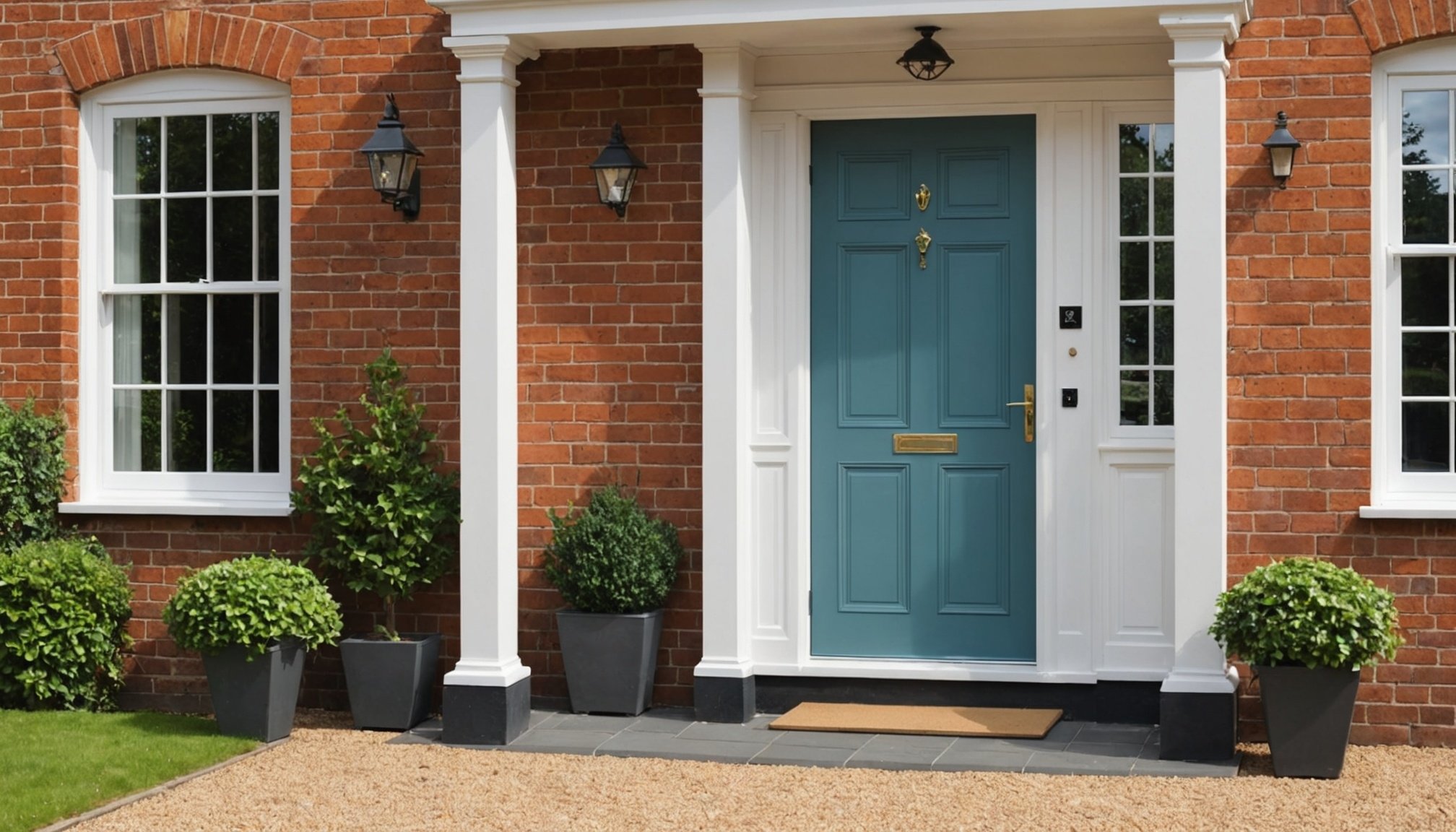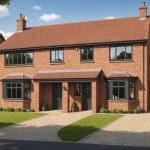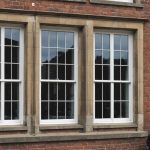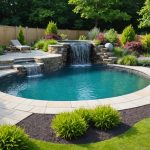Overview of Heat Loss in Entryways
Entryways play a significant role in a home’s overall heat loss, primarily because they serve as a direct path for outside air to infiltrate your living spaces. Several common factors lead to this issue, such as poor sealing around doors or inadequate insulation in walls and ceilings adjacent to these areas. Addressing these problems is crucial for both energy efficiency and household comfort, especially in colder months when the warm indoor air can easily escape.
In the UK, homeowners often face challenges related to maintaining entryway efficiency. This includes dealing with fluctuating weather conditions which exacerbate the loss of heat and make insulation less effective. Moreover, older homes may come with original materials that have degraded over time, reducing their insulation value.
Also read : Strategic CO2 Detector Placement: A Guide for UK Terraced Homes
Improving home insulation in entryways doesn’t just cut energy bills, it also helps in creating a more consistent indoor climate. Effective strategies involve replacing worn weather stripping, installing storm doors, and upgrading insulation materials. By addressing these areas, homeowners can significantly reduce unwanted airflow and subsequently lower their carbon footprint, making their homes more environmentally friendly and economically sustainable.
Smart Entryway Solutions Explained
Smart entryways are revolutionizing how homes are accessed and secured. By incorporating smart solutions and energy-efficient technologies, homeowners can significantly enhance their home improvement strategies.
Also to read : Seamlessly Blend Smart Lighting into Your UK Home: A Homeowner’s Guide to Integration
Types of Smart Entryway Solutions
Numerous smart entryway solutions exist today. These include smart doors that can be controlled via smartphone apps, offering both convenience and security. Door sensors can detect motion or if a door is open, sending alerts to the homeowner. Automated systems, meanwhile, can be programmed to lock or unlock doors at specific times, maximising both security and energy efficiency.
Comparatively, traditional entryway solutions such as standard locks and keys lack these advanced features, making smart technologies a much-preferred choice for modern homes.
Integration with Home Automation
Integrating smart entryway solutions into wider home automation systems can greatly enhance the overall functionality. Compatible devices like smart lights can be programmed to switch on when the entryway is accessed, serving both security and energy-saving purposes. Managing these entryway systems remotely via apps or voice commands not only adds convenience but also ensures home security is just a click away. With energy-efficient technologies, this integration promotes sustainable living while upgrading your home’s access systems.
Specific Products for Reducing Heat Loss
Exploring energy-efficient products on the UK market can significantly enhance heat retention in homes, providing both economic and environmental benefits. Within the field of home technology, several key players dominate with innovative solutions tailored for modern homes.
Firstly, Insulbrick’s ThermalGuard offers exceptional insulation capabilities. Featuring advanced materials, it prevents excessive heat escape, especially effective in older buildings. Users report a marked decrease in heating bills, with a return on investment within two years.
Another standout is ThermoPane’s Smart Windows. These utilise home technology to adjust insulation levels based on external conditions. The energy-efficient glass reduces heat loss without compromising natural light, a favourite among eco-conscious homeowners. Many users appreciate the seamless integration with smart home systems.
WarmFloor Radiant Heat provides a new dimension in heat retention. This underfloor heating system maintains optimal temperatures, keeping homes cosy while using less energy. Testimonials highlight its consistent warmth and invisible installation.
Selecting the right energy-efficient product for your needs can transform your home, achieving superior comfort while minimising environmental impact. Homeowners who have invested in these technologies frequently cite significant improvements in both living conditions and energy savings.
Installation Tips and Best Practices
Mastering the installation guidelines for entryways can save both time and resources. Homeowners often opt for DIY solutions to address small-scale projects, providing a cost-effective alternative to hiring professionals. However, knowing when to call in the experts can be just as crucial.
DIY Installation Tips
For those confident in their skills, here’s a step-by-step guide:
- Start by measuring the space accurately. This ensures materials fit without the need for major adjustments.
- Acquire the necessary tools: a reliable drill, a sturdy level, and a quality measuring tape are essential.
- Carefully follow any manufacturer’s instructions to avoid common pitfalls that can delay the project or lead to errors.
Frequently encountered pitfalls include missing steps in the initial plan or using incorrect materials, leading to alignment issues. Being equipped with a complete set of materials helps streamline the installation and minimise frustration.
When to Seek Professional Help
Consider professional installation if the task involves complex adjustments or if structural integrity is at stake. Hiring experts can ensure safety and precision, offering peace of mind. Professional services also come with warranties, an added value for those investing in high-end entryways.
If pursuing professional assistance, seek reputable installers in the UK by checking reviews and credentials. Recommendations from trusted sources can lead to finding seasoned experts adept in solving even the most intricate of entryway challenges.
Benefits of Reducing Heat Loss
Reducing heat loss from your home offers a multitude of advantages, particularly when it comes to cost savings. By investing in solutions to minimise heat loss, you are likely to see a significant reduction in your energy bills. This is primarily because your heating system won’t need to work as hard to maintain desired temperatures. Fewer energy expenditures mean more money stays in your pocket.
Moreover, addressing heat loss leads to marked improvement in comfort. An insulated home retains warmth more effectively, ensuring that indoor temperatures remain consistent, even in colder weather. This results in a more pleasant and stable indoor climate, making living spaces cozy and enjoyable throughout the year.
In addition to economic and comfort benefits, there are substantial environmental impacts. Improving energy efficiency by reducing heat loss lowers your household’s carbon footprint. With fewer emissions from reduced energy consumption, you contribute positively to the environment. The choice to enhance your home’s energy efficiency is an effective step toward sustainable living. Adopting such measures is a proactive way to support environmental conservation efforts while enjoying the immediate benefits of a more efficient home.
Case Studies and Homeowner Examples
Exploring real-life implementations can provide invaluable insights into smart entryway solutions. Let’s delve into some success stories and expert advice that showcase actual homeowner experiences and industry recommendations.
Success Stories from UK Homeowners
In the UK, many homeowners have experienced transformative results by adopting smart entryway solutions. For instance, Sarah from Portsmouth upgraded to a smart door system and immediately noticed a reduction in draughts and increased security. “It’s amazing how this small change made such a big difference,” she shared. This homeowner observed a 30% reduction in energy bills within two months.
Another homeowner from Manchester turned to smart locks and cameras, enhancing both convenience and safety. “I feel much more secure knowing I can monitor my home remotely,” he noted. These examples underscore the practical benefits and improvements achieved through technology.
Expert Recommendations
Industry professionals emphasise the importance of choosing the right solutions for specific home types. For compact flats, a sleek video doorbell combined with remote-controlled locks is often recommended. Experts predict that integrating such technologies will not only continue to reduce energy consumption but also increase the overall efficiency of home management. Embracing these practices aligns with forward-looking sustainability goals for modern homeowners.











